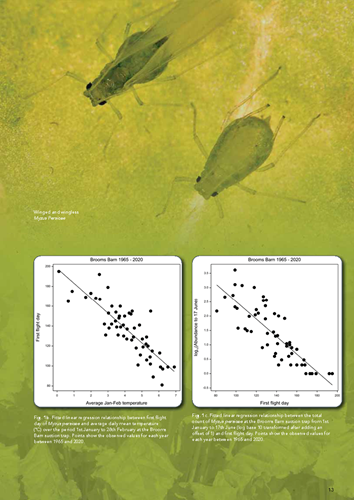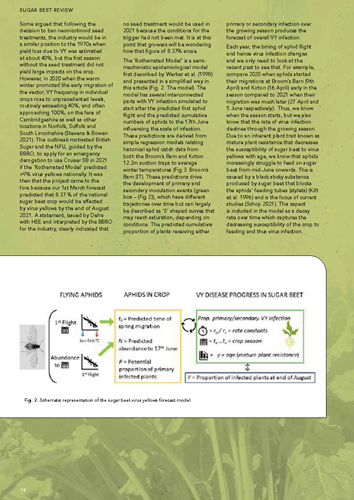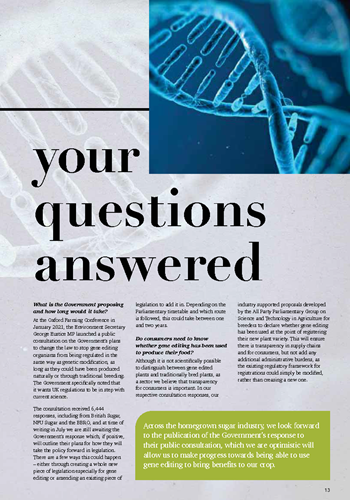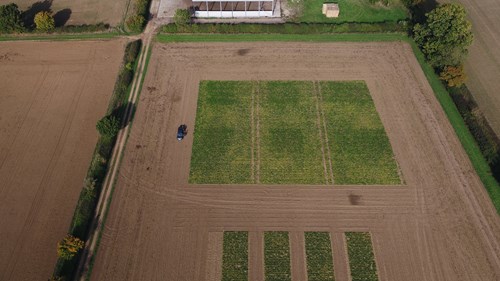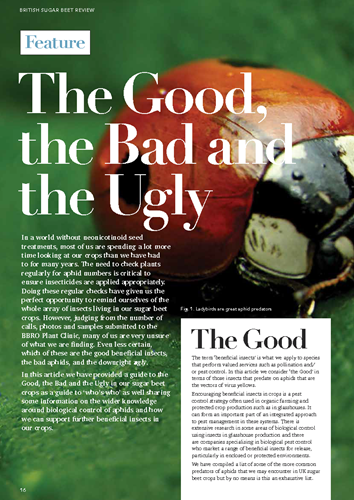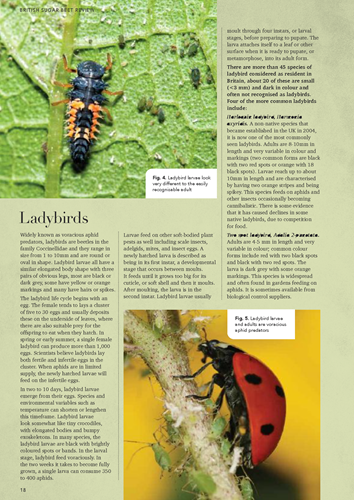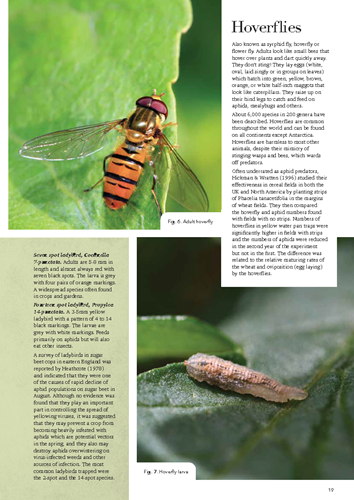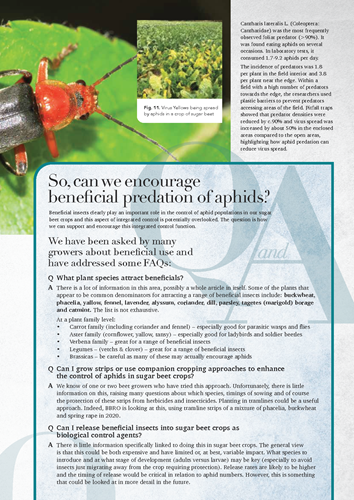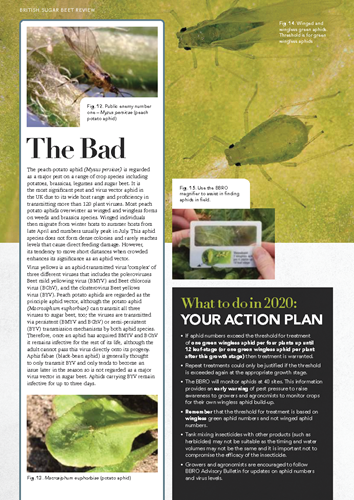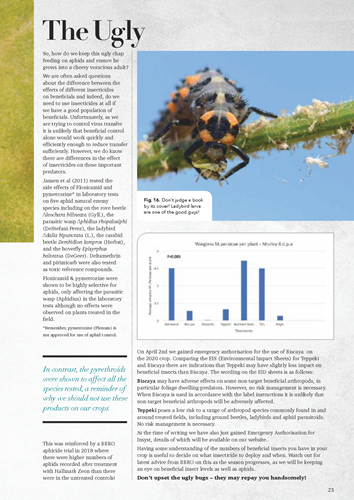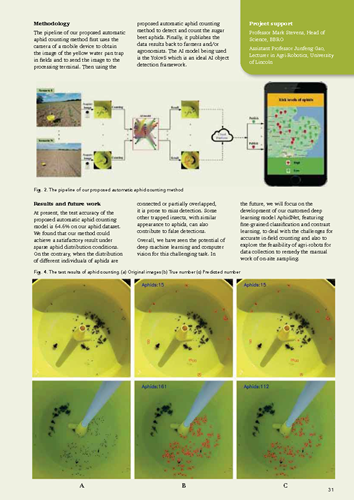VY Risk Forecasting
BBRO work closely with Rothamsted Research to assess the level of virus threat expected per year and the estimated arrival of M. persicae and Macrosiphum euphorbiae (the primary aphid vectors of virus yellows) into the sugar beet crop.
Once flight and risk is determined we work with British Sugar, several growers and agronomists to monitor aphids across the four sugar beet factory areas through the spring and early summer. The data received is fed into the BBRO aphid survey (Access the Aphid Survey Dashboard) and used to form guidance issued via our Advisory Bulletin and other communication outlets.
From the 3rd week in April until early July, approx. 45 sites are closely monitored, twice a week for green wingless aphids on 20 plants. In addition, at the BBRO managed sites, yellow water pans are also deployed, and samples taken twice a week for laboratory analysis to confirm numbers of winged M. persicae and Macrosiphum euphorbiae, the primary vectors of virus yellows.
Influential factors impacting aphid numbers in crops
- Proximity to autumn-sown oilseed rape/brassica crops
- Proximity to overwintered AD beet
- Nearby spoilage heaps or other root remnants from previous crop
- Delayed or patchy emergence encouraging aphids into field
- Warm early spring weather, encouraging population growth before beneficials have established
In field crop monitoring
Monitoring sites include both CruiserSB and untreated crops. Winged and wingless aphid numbers are expected to increase throughout May and early June, especially on non-Cruiser treated crops. Where the threshold of one green wingless aphid per four plants (5 or more wingless aphids per 20 plants) is exceeded on the monitoring sites, growers with crops in the area are encouraged to check their own crops with some urgency and where required apply the appropriate foliar insecticide. In addition, in some crops, particularly with small plants present, the persistence of foliar insecticides can be relatively short, so growers are encouraged to continue monitoring and where available some may need to use all three allotted insecticides before the onset of mature plant resistance.
We would expect that Cruiser-treated crops would have effective protection from green wingless aphids for between 8-10 weeks post sowing.
The forecasting model is managed by Rothamsted Research.

